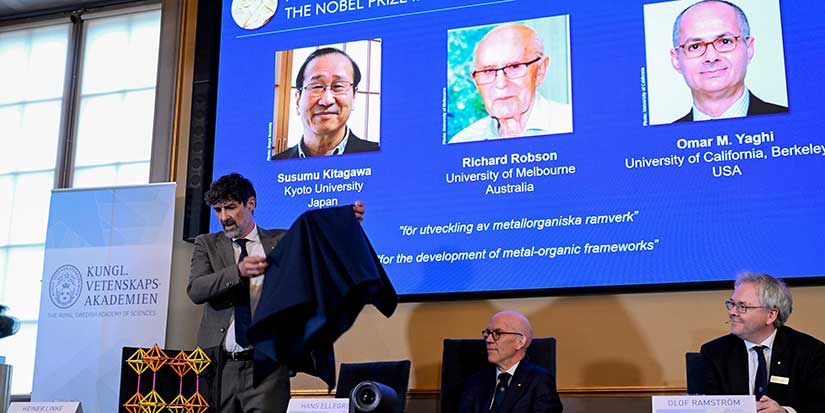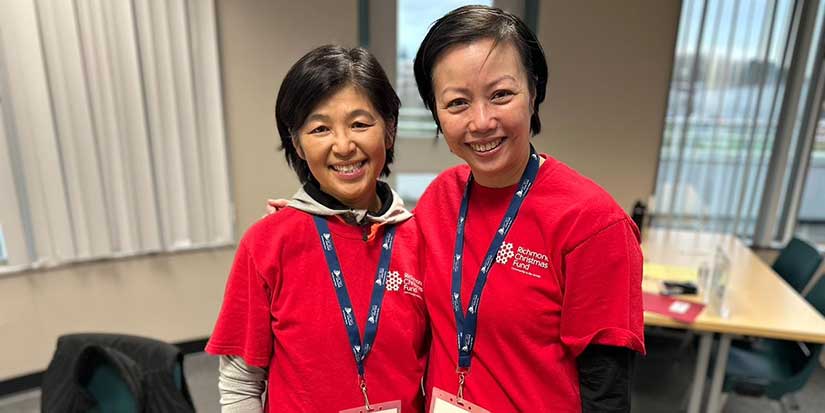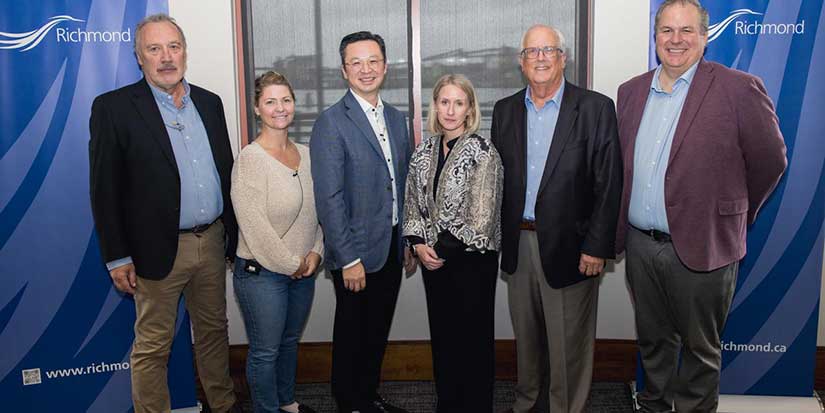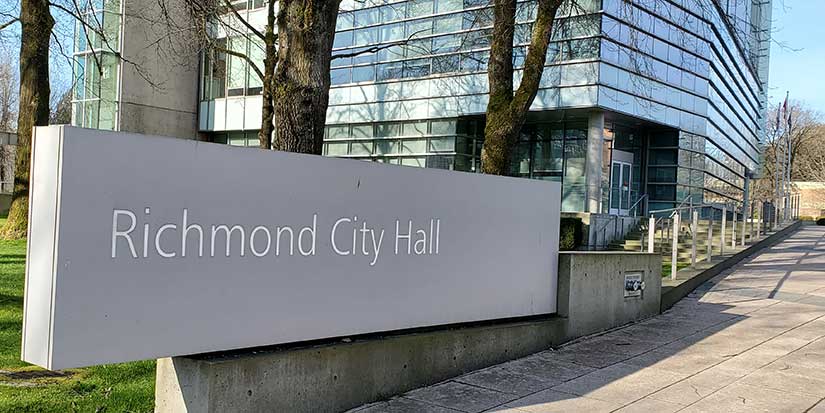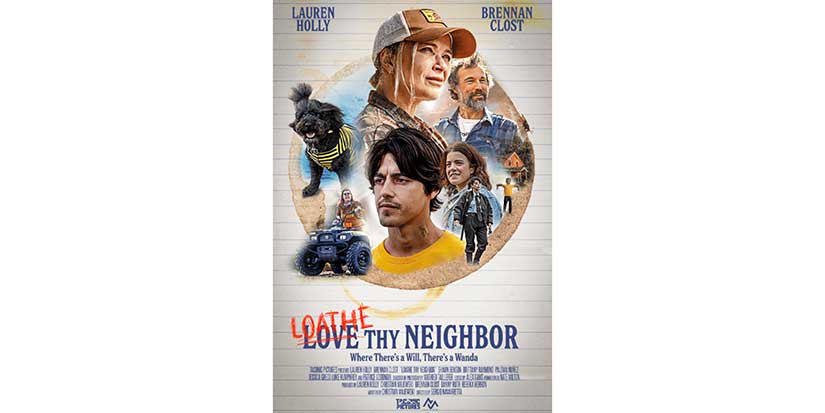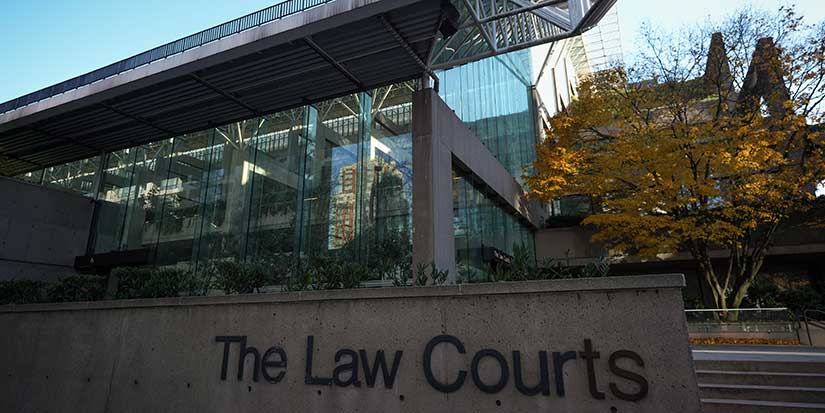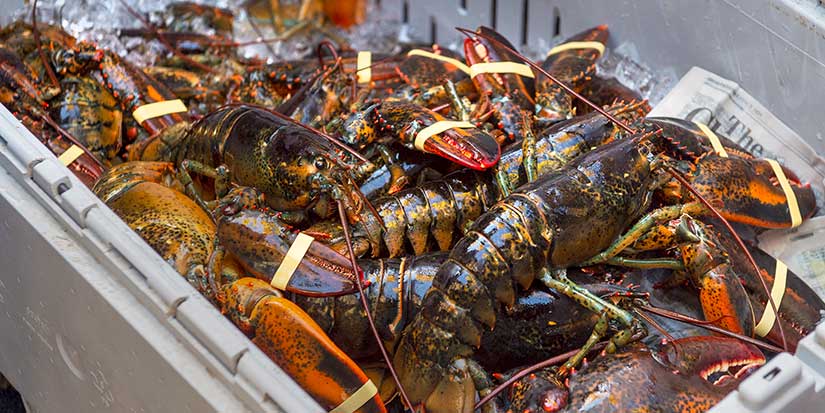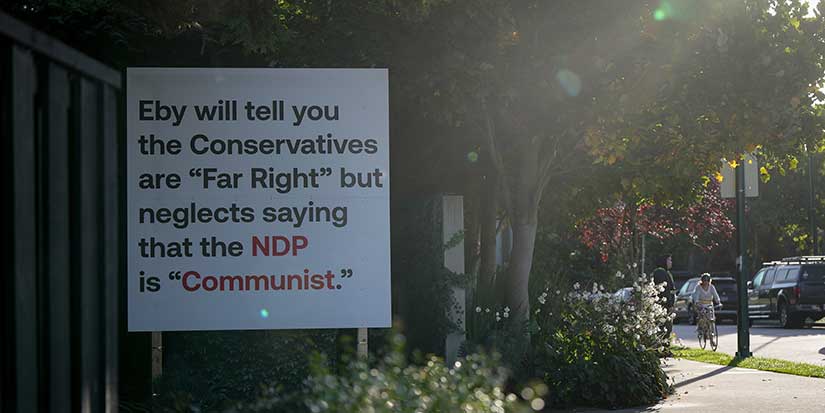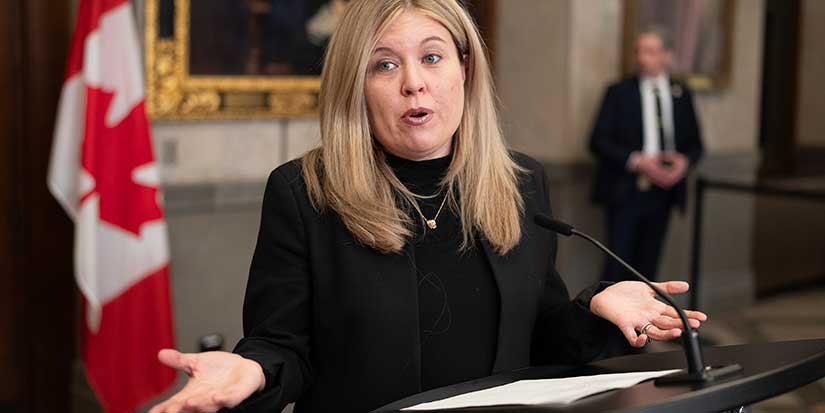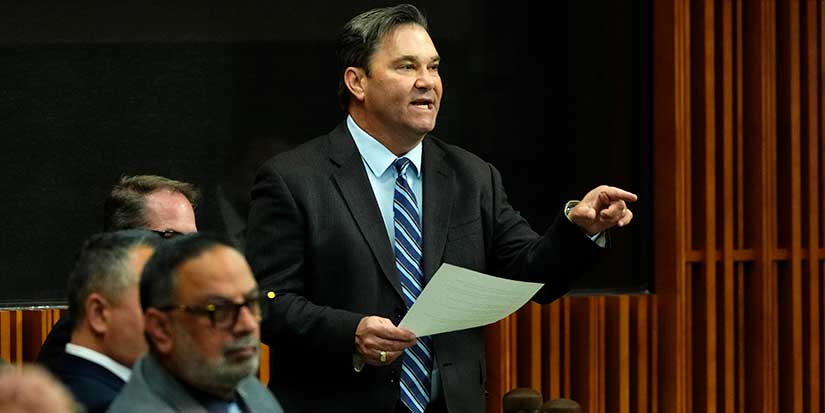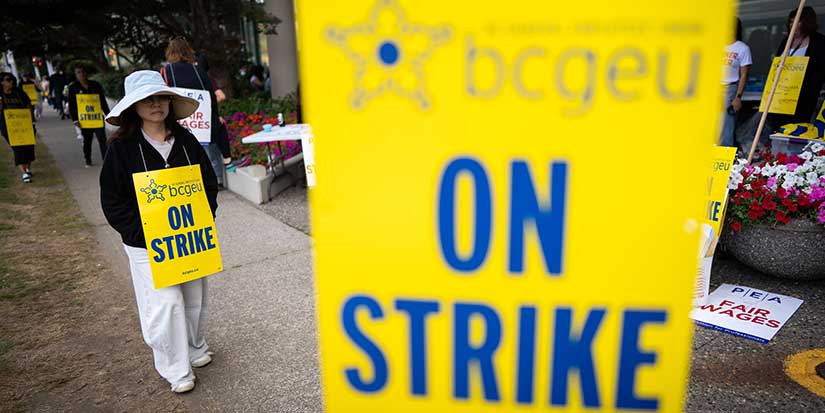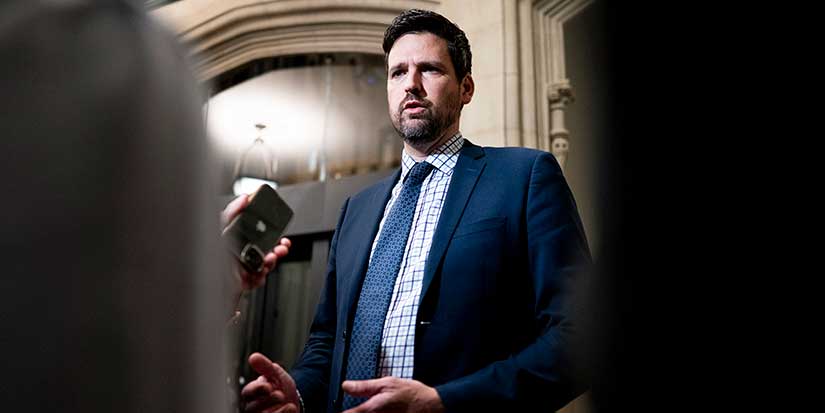International
Nobel Prize in chemistry goes to discovery that could trap C02 and bring water to deserts
Published 11:57 PDT, Wed October 8, 2025
—
STOCKHOLM (AP) — Three scientists won the Nobel Prize in chemistry Wednesday for their development of new molecular structures that can trap vast quantities of gas inside, laying the groundwork to potentially suck greenhouse gases out of the atmosphere or harvest moisture from desert environments.
Heiner Linke, chairperson of the committee that made the award, compared the structures called metal-organic frameworks to the seemingly bottomless magical handbag carried by Hermione Granger in the “Harry Potter” series. Another example might be Mary Poppins’ enchanted carpet bag. These containers look small from the outside but are able to hold surprisingly large quantities within.
The committee said Susumu Kitagawa, Richard Robson and Omar M. Yaghi were honored for “groundbreaking discoveries" that “may contribute to solving some of humankind’s greatest challenges,” from pollution to water scarcity.
Robson, 88, is affiliated with the University of Melbourne in Australia. Kitagawa, 74, is with Japan’s Kyoto University, and Yaghi, 60, is with the University of California, Berkeley.
The work that won the 2025 Nobel Prize in chemistry
The chemists worked separately but added to each other’s breakthroughs over decades, beginning with Robson's work in the 1980s.
The scientists were able to devise stable atomic structures that preserved holes of specific sizes that allowed gas or liquid to flow in and out. The holes can be customized to match the size of specific molecules that scientists or engineers want to hold in place, such as water, carbon dioxide or methane.
“That level of control is quite rare in chemistry,” said Kim Jelfs, a computational chemist at Imperial College London. “It’s really efficient for storing gases.”
A relatively small amount of the structure — which combines metal nodes and organic rods, somewhat like the interchangeable building pieces in Tinker Toys — creates many organized holes and a huge amount of surface area inside.
For instance, Jelfs said, a few grams of molecular organic framework may have as much surface area as a soccer field, all of which can be used to lock gas molecules in place.
“If you can store toxic gases,” said American Chemical Society President Dorothy Phillips, “it can help address global challenges.”
Why the work matters
Today researchers around the world are exploring possibilities that include using the frameworks to remove greenhouse gases from the atmosphere and pollution from industrial sites. Another possibility is to use them to harvest moisture from desert air, perhaps to one day provide clean drinking water in arid environments.
Scientists are also investigating using the structures for targeted drug delivery. The idea is to load them with medicine that may be slowly released inside the body.
“It could be a better way to deliver low doses continually,” as with cancer drugs, said David Pugh, a chemist at King's College London.
The research "could be really, really valuable" in many industries, he said. But “there are still challenges when you translate that from the lab to the real world.” For example, many of the structure store the most gas and liquid in very low-temperature, high-pressure environments, he said.
Today, metal-organic frameworks are already being used in some surprising ways, including as part of packing material to keep fruit fresh over long shipping routes, by gradually releasing chemicals that slow down the ripening process.
The winners' reactions
Yaghi learned that he had won while traveling from San Francisco to Brussels on Wednesday. As he grabbed his luggage and prepared to change flights in Frankfurt, his phone started buzzing with a call from Sweden.
“You cannot prepare for a moment like that," he said at a news conference. ”The feeling is indescribable, but it's absolutely thrilling."
When his phone rang, Kitagawa was at first skeptical. He said he answered “rather bluntly," thinking it must be a telemarketing call.
“It was such a big prize so I thought, ‘Is it really true?’” he recalled during a news conference at Kyoto University. “When one of the experts came on the phone and congratulated me, I finally thought it was real and felt relaxed.”
Kitagawa said the research has been widely recognized in the world of chemistry, but “it is very difficult to gain understanding by the ordinary people, and I’m delighted to be recognized.”
The 88-year-old Robson, in a phone call with The Associated Press from his home in Melbourne, Australia, said he was “very pleased of course and a bit stunned as well.”
“This is a major thing that happens late in life when I’m not really in a condition to withstand it all,” he said. “But here we are.”
Nobel history and other 2025 prizes
The 2024 chemistry prize was awarded to David Baker, a biochemist at the University of Washington in Seattle, and to Demis Hassabis and John Jumper, computer scientists at Google DeepMind, a British-American artificial intelligence research laboratory based in London.
The three were awarded for discovering powerful techniques to decode and even design novel proteins, the building blocks of life. Their work used advanced technologies, including artificial intelligence, and holds the potential to transform how new drugs and other materials are made.
The first Nobel of 2025 was announced Monday. The prize in medicine went to Mary E. Brunkow, Fred Ramsdell and Dr. Shimon Sakaguchi for their discoveries concerning peripheral immune tolerance.
Tuesday's physics prize went to John Clarke, Michel H. Devoret and John M. Martinis for their research on the weird world of subatomic quantum tunneling that advances the power of everyday digital communications and computing.
This year's Nobel announcements continue with the literature prize Thursday. The Nobel Peace Prize will be announced Friday and the economics prize next Monday.
The award ceremony will be held Dec. 10, the anniversary of the death of Alfred Nobel, who founded the prizes. Nobel was a wealthy Swedish industrialist and the inventor of dynamite. He died in 1896.
———
Dazio reported from Berlin, and Larson reported from Washington. Associated Press writers Mari Yamaguchi in Tokyo and Rod McGuirk in Melbourne, Australia, contributed to this report.
– Kostya Manenkov, Stefanie Dazio and Christina Larson, The Associated Press
